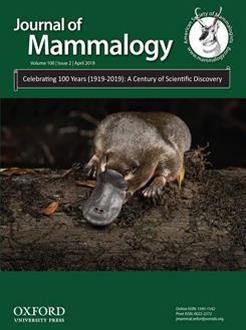White-lipped peccaries (WLPs; Tayassu pecari, Tayassuidae, Cetartiodactyla) are forest-dwelling ungulates critical to maintaining healthy Neotropical forest ecosystems through key aspects of their dietary behaviors, including seed predation and dispersal. Land-use change and deforestation threaten WLP access to food resources, and thus knowledge of how WLP diet varies spatially is necessary to frame conservation efforts for the species. Here, we use stable carbon (δ13C) and nitrogen (δ15N) isotopes from WLP hair and food resources to assess whether WLP diet varies among four regions in three Brazilian biomes: the Pantanal, the Cerrado, and the Atlantic Forest (semi-deciduous and ombrophilous), each varying in forest canopy cover, climatic characteristics, and degrees of agricultural impacts. We find that in all regions WLPs are consuming primarily C3 resources, with mean δ13C values ranging from –28.7‰ to –26.9‰. In the heavily fragmented semi-deciduous Atlantic Forest, δ13C values are the highest, and may indicate that some individuals are consuming a small amount of C4 crops or demonstrating increased levels of insectivory. A through-time comparison of WLP hair in the semi-deciduous Atlantic Forest suggests the recorded slight departure from an exclusive C3 diet may be a recent phenomenon, as hairs collected prior to the year 2000 have lower δ13C values than those collected in 2016. While some individual WLPs may slightly alter diet in heavily anthropogenically modified areas, C4 crops are not a main component of WLP diet. Our results suggest that WLPs are still highly dependent on forest resources, even in human-altered landscapes, and conservation and management plans for the species must consider these dietary needs in order to be successful.
How to translate text using browser tools
15 March 2019
Spatial isotopic dietary plasticity of a Neotropical forest ungulate: the white-lipped peccary (Tayassu pecari)
Jennifer Bradham,
Maria Luisa S. P. Jorge,
Felipe Pedrosa,
Alexine Keuroghlian,
Vladimir Eliodoro Costa,
William Bercê,
Mauro Galetti
ACCESS THE FULL ARTICLE

Journal of Mammalogy
Vol. 100 • No. 2
April 2019
Vol. 100 • No. 2
April 2019
Brazil
diet plasticity
ecosystem engineer
frugivore
stable isotope
ungulates




